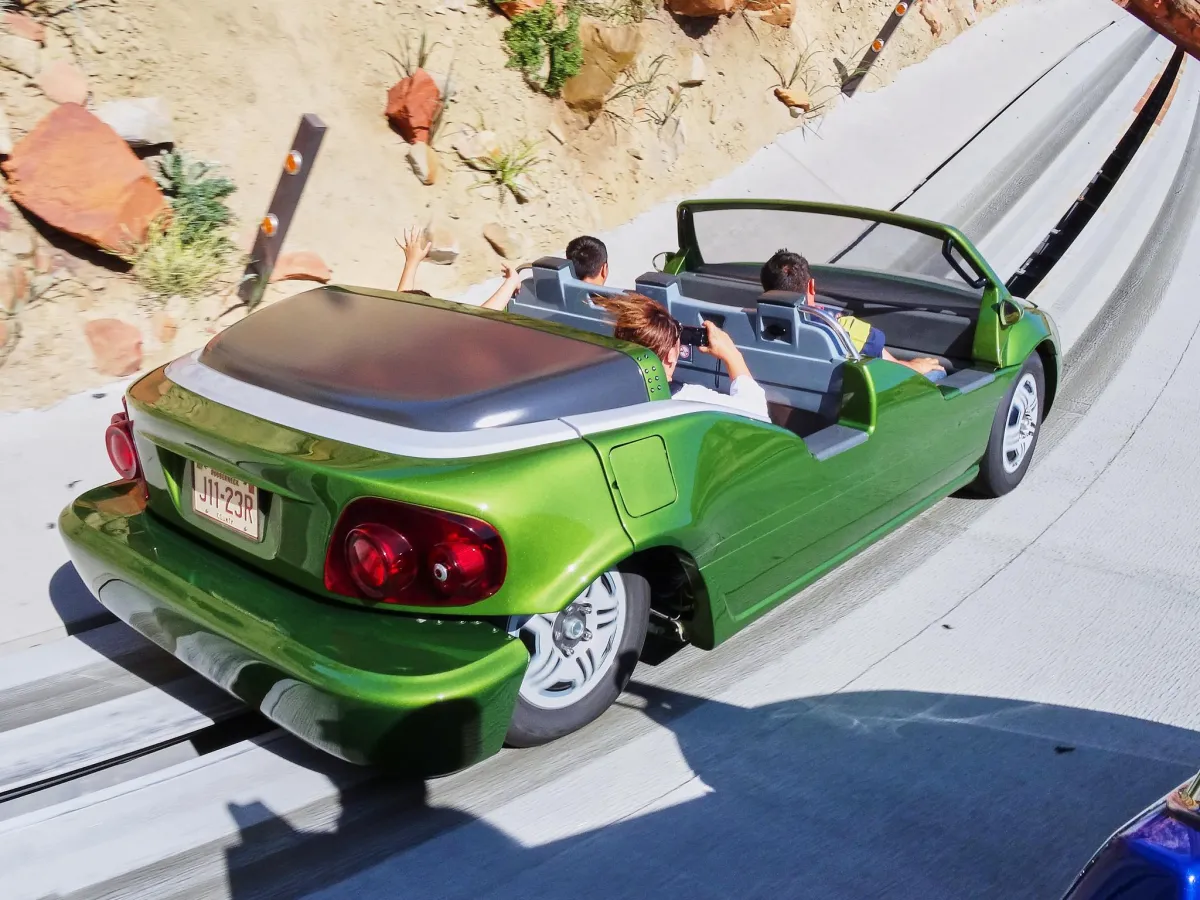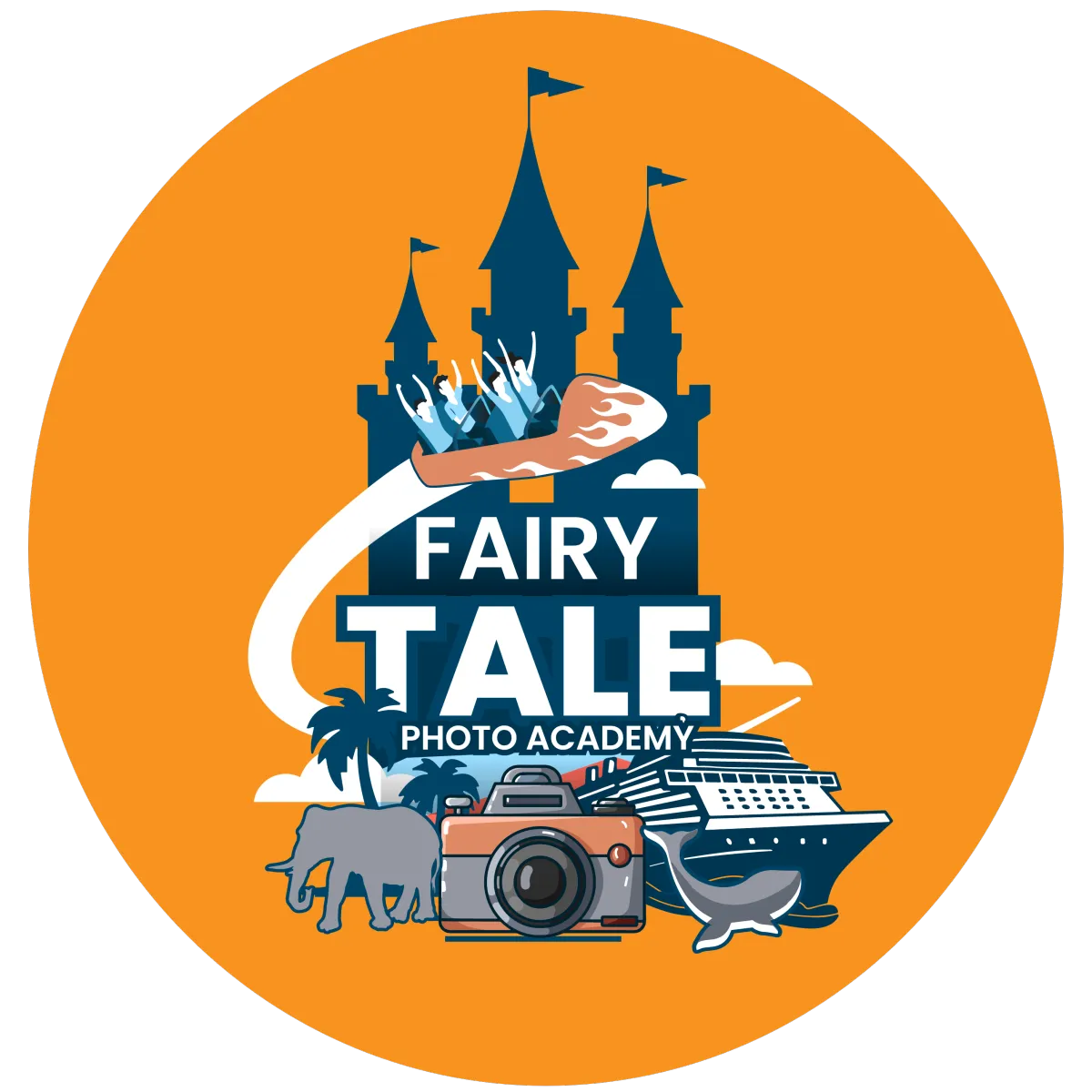
Make It Stand Out: How Unusual Angles Add Drama and Depth to Your Shots
When it comes to theme park photography, most people tend to stick to the basics: keep the horizon level, follow the rule of thirds, and center their subject neatly in the frame. While these are solid guidelines, breaking these rules can lead to more compelling, dynamic, and visually exciting photos—especially in a place as vibrant and kinetic as a theme park.
Changing your angle can completely transform the energy of a shot. A simple tilt of the camera or an unconventional perspective can add movement, drama, and depth, turning an ordinary photo into something extraordinary. Here’s how to experiment with angles to make your shots stand out.
1. Use Ride Curves to Your Advantage
Capturing a moving ride vehicle on a curve can create a dramatic effect that mimics the look of a fisheye lens—without needing special equipment. The natural arc of the ride, when shot from the right angle, can exaggerate the sense of speed and action, making the photo feel alive. Try positioning yourself at the outer edge of a turn and using a slightly tilted camera to amplify the effect.
2. The Power of the Tilt
Tilting your camera slightly—sometimes called the “Dutch angle”—adds an energetic, off-kilter feel to your photos. This works particularly well with action shots, such as roller coasters speeding by or performers mid-motion. A subtle tilt can create a sense of excitement, while a more extreme tilt can add a surreal, almost dreamlike quality to your images.
3. Look Straight Up
Most people shoot photos at eye level, but what’s happening above you? Many theme park designers include intricate ceiling details, towering attractions, and dramatic lighting that often go unnoticed. Point your camera directly upward to capture elements like glowing lanterns, grand architecture, or swirling ride structures from a new, immersive perspective.
4. Shoot Straight Down
On the flip side, looking straight down can reveal details that most visitors overlook. Patterns in the pavement, themed flooring, reflections in puddles, or even scattered popcorn on the ground can tell a unique story. If you’re on an elevated platform, try shooting straight down to frame crowds, shadows, or a winding queue line in a creative way.
5. Find Tight Angles for Maximum Impact
Instead of stepping back for a wide-angle shot, move in close and shoot tight. A low, close-up angle of a ride vehicle, an elaborate light fixture, or a decorative element can emphasize texture, color, and intricate details that might be lost in a wider shot. This technique is especially useful for capturing storytelling elements that contribute to a park’s theme.
6. Shoot the Traditional Way—Then Get Creative
One of the best ways to ensure you get the shot you want is to take multiple versions. First, capture the scene in a traditional way—keeping the horizon level, using the rule of thirds, and framing it in a way that feels natural. Then, once you have that safe shot, start experimenting. Tilt the camera, try a low or high angle, and take a few unexpected compositions.
When your trip is over, you’ll have a variety of options to choose from, giving you more creative freedom when telling the story of your vacation. The more perspectives you capture, the more ways you’ll remember and share the experience.
Final Thoughts
Photography is all about storytelling, and the angles you choose can dramatically impact the way your story is told. Don’t be afraid to break the conventional rules and see your favorite theme park from a fresh perspective.
Want to learn more ways to improve your theme park photography? Download my free ebook at FairyTalePhotoAcademy.com and start capturing unforgettable moments today!

